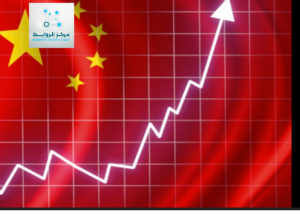By : Shatha Kalel
In a significant trade move, China announced on May 18, 2025, that it would impose anti-dumping duties of up to 74.9% on imports of POM (polyoxymethylene) copolymers—a type of high-performance engineering plastic—from the United States, the European Union, Japan, and Taiwan. This decision follows a probe launched in May 2024, amid heightened trade tensions with the United States.
Why the Duties Were Imposed
The Chinese Ministry of Commerce concluded that manufacturers from the above regions were dumping POM copolymers into the Chinese market—that is, selling the product below market value in a way that harms domestic producers.
POM copolymers are widely used in the automotive, electronics, and medical sectors as substitutes for metals like copper and zinc due to their durability, stiffness, and chemical resistance. As such, they are considered strategically important in high-tech and industrial manufacturing.
According to the ministry:
The highest tariff of 74.9% applies to U.S. imports.
European imports face a 34.5% duty.
Japanese imports receive a 35.5% duty (24.5% for Asahi Kasei Corp).
Taiwanese products are generally subject to 32.6%, though some companies like Formosa Plastics received much lower rates (4% for Formosa, 3.8% for Polyplastics Taiwan).
The decision comes just months after the U.S. raised tariffs on key Chinese exports, including electric vehicles and semiconductors, further escalating trade tensions between the two global powers.
Economic Implications
1. Impact on Global Trade Relations
The anti-dumping duties are likely to strain China’s trade ties with the U.S., EU, Japan, and Taiwan, even as hopes had recently risen for a thaw in the U.S.-China trade war. The timing of this announcement, so close to the U.S. tariffs, suggests it may also be partially retaliatory in nature.
2. Protection of Domestic Industry
By imposing these duties, China aims to shield its domestic POM copolymer manufacturers from unfair competition, giving them space to grow and remain competitive in the global market. This protection could stimulate domestic production, innovation, and employment in the plastics and chemical industries.
3. Potential Price Increases for End Users
With imported POM copolymers now significantly more expensive, downstream industries—such as automotive, electronics, and medical device manufacturers—could face higher input costs. This could lead to price increases for finished goods or compel firms to shift to domestic suppliers, depending on the availability and quality of local alternatives.
4. Limited Immediate Economic Damage
Despite rising trade frictions, China’s economic data for April 2025 showed that the overall impact on industrial activity has so far been muted:
-
Industrial output grew 6.1% year-on-year in April, slightly below March’s 7.7% but still exceeding analyst expectations.
-
Retail sales rose 5.1%, also slightly lower than March.
-
However, property investment and construction continue to decline sharply, highlighting ongoing structural challenges in China’s economy.
Conclusion
China’s decision to impose anti-dumping duties on imported industrial plastics reflects both economic protectionism and strategic signaling amid continued trade tensions with the U.S. and other major economies. While the move protects domestic producers in the short term, it could add pressure to global supply chains and worsen relations with key trade partners. For now, China’s broader economy appears resilient, but the long-term impact of such trade measures will depend on how the global trading environment evolves in the months ahead.
Economic Studies Unit / North America Office
Al-Rabetah Center for Strategic Research and Studies

